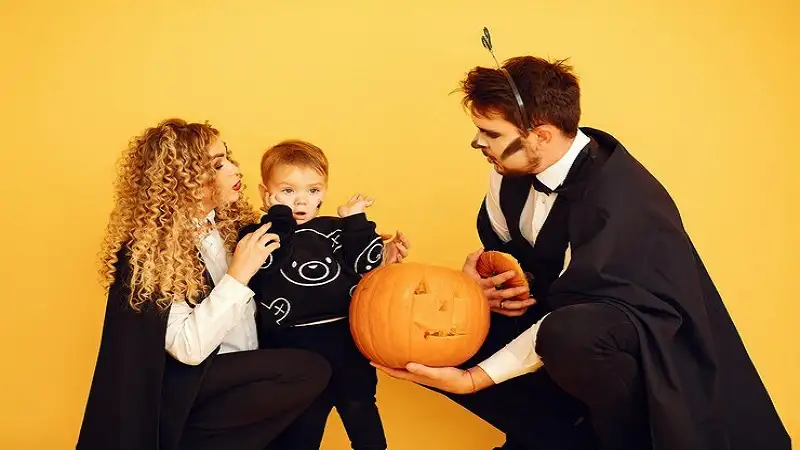Antioch Teacher Halloween Costume Pictures
Halloween is a holiday beloved by many for its costumes, decorations, and playful spirit. Every year, people across the globe embrace the tradition of dressing up in various costumes, from spooky ghosts to superheroes and everything in between. Schools often participate in these celebrations, encouraging students and even teachers to engage in the fun. However, in recent years, some Halloween costumes have sparked controversy, as was the case with an incident involving a teacher in Antioch, California. antioch teacher halloween costume pictures
This article will explore the events surrounding the Antioch teacher Halloween costume pictures controversy, the broader societal conversation on costume choices, the role of schools, and how these incidents reflect deeper issues regarding cultural sensitivity, professionalism, and the responsibilities of educators.
The Antioch Incident: A Snapshot of the Controversy
In the fall of [year], pictures of a teacher from Antioch, California, wearing a controversial Halloween costume at a school event surfaced online, sparking an uproar on social media. The costume in question was deemed inappropriate and offensive by many, leading to an outcry from parents, students, and the broader community. The images spread quickly, fueling a debate about the role of educators in setting an example, as well as the boundaries of costume choices in professional settings.
While some viewed the costume as harmless fun, others argued that it crossed the line into cultural insensitivity or represented inappropriate imagery for an educator to display in front of students. The rapid spread of the images and the subsequent outrage highlighted the power of social media in amplifying local incidents into national and even global conversations. antioch teacher halloween costume pictures
Halloween Costumes and Cultural Sensitivity
One of the primary points of contention in the Antioch teacher Halloween costume controversy was whether the costume was culturally insensitive. In recent years, there has been growing awareness around the issue of cultural appropriation—when individuals from a dominant culture adopt elements of a marginalized culture in ways that are seen as exploitative or disrespectful. This is particularly relevant in the context of Halloween, where costumes often take inspiration from various cultures, sometimes reducing them to stereotypes.
For educators, who serve as role models for students, the stakes are even higher. A teacher wearing a costume that is perceived as mocking or trivializing a particular culture can send the wrong message to students, especially in diverse school environments. Antioch, like many parts of California, is home to a multicultural community, making it all the more important for educators to be mindful of the impact their actions may have on their students and their families.
Understanding Cultural Appropriation
Cultural appropriation refers to the adoption or use of elements from one culture by individuals from another, particularly when there is an imbalance of power. This can include wearing traditional clothing, hairstyles, or accessories, especially when done without a deep understanding of their cultural significance.
In the context of Halloween, some costumes that draw from Native American, African, Asian, or other ethnic backgrounds have been criticized for reducing rich traditions to mere caricatures. For example, costumes featuring Native American headdresses, “geisha” outfits, or Mexican Día de los Muertos imagery have sparked controversy due to their lack of respect for the deep cultural meanings these symbols carry. antioch teacher halloween costume pictures
In the Antioch incident, the teacher’s costume was seen by some as crossing this line. Whether intentionally or not, the costume evoked imagery that many found offensive, leading to a larger conversation about the importance of cultural awareness, especially in schools.
The Role of Educators: Setting an Example
Teachers hold a unique position of influence over their students. Beyond imparting academic knowledge, they help shape students’ social values, teach respect for diversity, and model appropriate behavior. As such, the Antioch teacher’s Halloween costume raised questions about the responsibilities educators have in ensuring their actions align with these values.
Costume choices, while often seen as lighthearted, can carry unintended consequences, especially when worn in a professional setting. For teachers, Halloween presents an opportunity to engage students in creative and fun ways, but it also requires careful consideration of the potential messages being sent. In the case of the Antioch teacher, the decision to wear a costume that offended some community members led to a reevaluation of how schools handle such situations.
Professionalism in the Classroom
The classroom is a space where students should feel safe, respected, and valued. When teachers step outside the bounds of professionalism, whether through their words, actions, or appearance, it can undermine the trust that students and parents place in them. This is especially true when an educator’s behavior is perceived as insensitive or disrespectful.
While Halloween is a fun occasion, educators need to remember that their role as authority figures does not disappear simply because it’s a holiday. The Antioch teacher’s costume choice inadvertently highlighted the tension between maintaining professionalism and participating in school-wide celebrations. antioch teacher halloween costume pictures
The Power of Social Media in Amplifying Controversy
One of the defining aspects of the Antioch teacher Halloween costume controversy was the speed with which the images spread online. Social media platforms like Facebook, Instagram, and Twitter have transformed the way local incidents are shared, discussed, and amplified. In this case, what might have once been a minor local issue quickly gained widespread attention.
The viral nature of the photos led to increased scrutiny of the teacher and the school, with calls for accountability from both parents and the public. Some demanded the teacher be disciplined or even fired, while others defended the costume as a harmless choice blown out of proportion.
This incident underscores the fact that in the digital age, actions that occur in seemingly private or local settings can quickly become public. For educators, this means that every decision they make, even something as seemingly innocuous as a costume choice, can have far-reaching consequences.
The Response: How Schools Can Handle Controversial Situations
In response to the Antioch teacher Halloween costume incident, the school district faced the challenge of addressing the controversy in a way that acknowledged the concerns of the community while also supporting their staff. Situations like these require a delicate balance of discipline, education, and communication.
Open Dialogue and Cultural Awareness Training
One of the most effective ways for schools to address these types of controversies is through open dialogue and proactive measures to promote cultural awareness. Many schools have implemented cultural sensitivity training for staff, aimed at helping educators understand the importance of respecting diversity and avoiding actions that could be perceived as harmful.
In the wake of the Antioch incident, the district could have taken steps to engage the community in conversations about cultural appropriation, inclusivity, and the role of educators in setting an example. By fostering open communication, schools can create environments where difficult conversations can take place, and where both students and staff feel valued and understood.
Establishing Clear Guidelines for Costumes
Another way to prevent future incidents is for schools to establish clear guidelines for Halloween costumes. These guidelines can help ensure that costume choices are appropriate, respectful, and aligned with the values of the school community. For example, some schools have implemented policies that prohibit costumes depicting cultural or religious symbols, political figures, or anything that could be interpreted as offensive. antioch teacher halloween costume pictures
By setting these expectations in advance, schools can help educators make informed decisions about their participation in Halloween events, reducing the likelihood of unintentional offense.
The Broader Conversation: Halloween, Society, and Changing Norms
The Antioch teacher Halloween costume controversy is just one example of a larger societal shift in how we view costume choices, cultural appropriation, and respect for diversity. As our understanding of these issues evolves, so too does the way we approach holidays like Halloween.
While costumes have long been a way for people to express creativity and have fun, there is now greater awareness of the impact that certain costumes can have, particularly when they draw from marginalized cultures. As a result, more people are choosing to avoid costumes that could be seen as offensive, opting instead for options that celebrate creativity without perpetuating stereotypes.
Moving Forward: Fostering Inclusivity
As schools and communities continue to navigate these changing norms, the key to fostering a more inclusive environment lies in education and empathy. By helping students and staff understand the importance of cultural sensitivity, we can create spaces where everyone feels respected and valued. antioch teacher halloween costume pictures
For teachers, the responsibility to set a positive example extends beyond Halloween. It is a year-round commitment to promoting diversity, respect, and inclusivity in the classroom. The Antioch incident serves as a reminder that even small actions can have a big impact and that educators play a crucial role in shaping the values of the next generation.
Conclusion
The Antioch teacher Halloween costume pictures controversy is a reflection of broader societal conversations around cultural sensitivity, professionalism, and the responsibilities of educators. While Halloween is a time for fun and creativity, it also presents challenges in ensuring that costume choices are respectful and appropriate.
By fostering open dialogue, promoting cultural awareness, and setting clear guidelines, schools can help prevent future controversies and create inclusive environments for all students and staff. In the end, the goal is to ensure that Halloween—and every other day in the classroom—is a time of learning, respect, and understanding.






